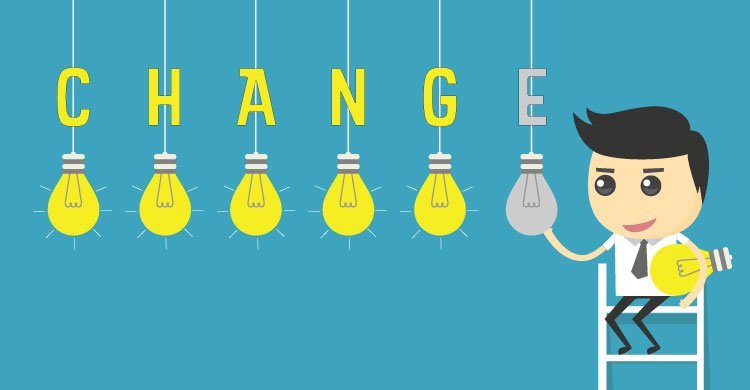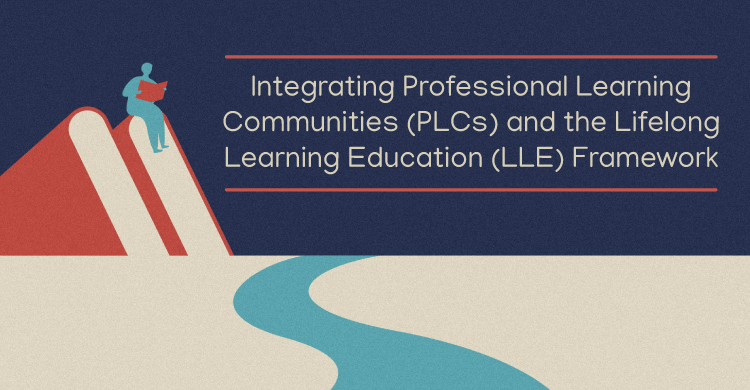I have the good fortune of working with teachers and administrators across the nation and beyond. I am in awe at the work ethic and dedication to students seen on a daily basis. I believe in my heart that everyone comes to school with the best of intentions each and every day. And yet, despite this hard work, students still struggle. I’m left to wonder, why? It certainly is not for lack of trying. It is not about insufficient skills or knowledge. Does teaching take superhuman power? What can be done to propel all students to higher levels of learning?
The task of increasing student learning can be daunting, in part because it often requires change beyond first-order change. Second-order change is needed.
What is first-order change?
I see first-order change often done with the best of intentions. First-order change is doing more or less of something you are already doing. First-order change is often reversible. It does not usually require new learning and is meant to tweak what already exists. It is often supported by research. But in most instances, these changes alone are not enough. Missing is a shift in the beliefs and philosophies that support the change.
Schools and districts have an abundance of examples of first-order change. Examples of first-order change initiatives include smaller classes, site-based management, ninety-minute teaching blocks at the secondary level, small learning communities or ninth-grade academies, teaching teams with common planning time, physically grouping similar grades and courses together to enhance collaboration, buying new textbooks and resources, and adjusting schedules, just to name a few. In most instances when a problem arises at a school, the immediate response is to implement any one of these types of first-order or structural changes. In fact, sometimes many of these initiatives are implemented simultaneously. It’s no wonder why so many educators suffer from initiative fatigue!
The problem is that just implementing these strategies or programs does not translate into higher levels of learning for all students unless the underlying beliefs and philosophies of the people who are asked to actually utilize them change. For instance, merely creating smaller class sizes, in and of itself, will not improve student learning unless the teachers in those classes change their instructional practices and relationships with students. If class sizes are decreased and the teacher continues to teach in a whole-group setting, rather than meeting the individual needs of the students, more learning will not necessarily occur. This is also true for block scheduling at the secondary level.
While these first-order changes have promise, they alone do not “fix” student learning. So, what should you do? What do you need? You cannot possibly work harder, so how do you put all of those energies into working more efficiently and effectively to make gains in student learning? Second-order change is needed.
What is second-order change?
Second-order change is doing something significantly or fundamentally different from what you have done before. The process is usually irreversible. Once you begin, it becomes impossible to return to the way you were doing things before. It requires a new way of seeing things and is a transformation to something that is quite different—a more desired state. It requires new learning and a shift in beliefs.
Some examples of the second-order change needed when first-order change is implemented are below.
First-order versus second-order change:
| First-Order Change | Second-Order Change |
| Change from a 50-minute period to a 90-minute block at the secondary level. | Shift instructional practices to include engaging learners through active learning and discourse. |
| Change from a large school to small learning academies or houses in secondary schools. | Implement systems of support in school routines and practices to shift students from feeling isolated to having a sense of belonging. |
| Create a time for interventions during the school day. | Determine which specific students need a targeted intervention and work together to figure out how students will get the additional time and support needed to learn. |
| Implement positive behavior interventions and supports (PBIS). | Create a culture of success and caring with clear expectations built on a level of respect and belief that all students can learn. |
First-order change provides a structure but too often lacks the purpose behind the change. Why is the change needed? What new learning is required to do it well? It becomes a checklist of things tried instead of a continuous look at improvement.
Evaluating the need for second-order change
How do you determine the second-order change needed in your school? You may want to work with a leadership team to identify those issues impacting student learning as evidenced by data. Who is the school serving well? Why? Who is the school not serving well? Why? The team will need to brainstorm adult actions that can impact student learning for the students not currently served.
All of this is accomplished best when the school has a vision that compels them to work together in collaborative teams to improve student learning and drives the first-order decisions made. If your school is better than it is now, what does it look like and sound like in the hallways? Classrooms? Main office? Bus area? Playground? Cafeteria? Staff lounge? Now contrast the vision with the current reality and begin to chart a course of action and a list of training needed to improve instructional and assessment practices, relationships, behavior expectations, and the work of teacher collaborative teams, to name a few. What are those areas in need of improvement? How can the vision drive the work?
The second-order change that has the greatest impact on student learning is the development of a collaborative culture. This shift from working in isolation to learning from one another requires first-order change of creating teams who share students or common curriculum and a schedule to include common planning time. But a shift in philosophies, beliefs, and practices is also required.
For collaboration to have a positive impact on student learning, teams have to be focused on the right work. Collaborative teams need to focus on curriculum, instruction, and assessment. Teachers’ thinking shifts from “it’s merely my job to teach” to “it’s my job to ensure all students learn.”
Teams that have the most impact on learning:
- Are hungry for data and information that informs their next steps in instruction
- Are focused on what students actually learned as result of their instructional practices
- Understand the need to adjust instruction as learning occurs or is stalled
- Are willing to change their curriculum and instructional practices to meet the imminent needs of their students
- Develop and utilize assessments that yield information that will impact their practices
- Are anxious to share strategies to determine the best ways to get more students to learn a particular skill or concept
- See data as a vehicle for sharing best practices or investigating new ways to approach learning
- Make adjustments to curriculum and assessment that yield higher levels of learning for all students
- Understand that instruction and assessment are inseparable
Most people agree that we live in an ever-changing world and that change is inevitable. Some even acknowledge the need for deep, enduring second-order changes. In their short book Change Is Good . . . You Go First, Mac Anderson and Tom Feltenstein (2007) sum up how most people truly feel about change: change is good, as long as it does not impact what I do in my classroom. In other words, change struggles to cross the threshold of most classroom doors. Change is really, really hard, and real change is change in the classroom. Collaborative teams of teachers engaged in the right work drive change that ensures all students learn to high levels.
School Improvement for ALL: A How to Guide for Doing the Right Work written by my colleague and co-author, Sarah Schuhl, and myself outlines a framework for making the necessary second-order changes that result in learning for ALL. It provides a guide for administrators, teachers, and teams for doing the right work with examples, templates, and resources. Yes, we can make Learning for ALL a reality, but it will definitely mean change is ahead—second-order change for certain!
References:
Anderson, M., & Feltenstein, T. (2007). Change is good . . . You go first. Naperville, IL: Simple Truths.
[author_bio id=”360″]






